Hanoi strives to increase the average height of young people to 169 cm by 2030.
In recent years, population and development work in Hanoi has achieved many positive changes, especially in improving population quality, one of the key goals in the sustainable development strategy of the capital.
Illustration photo. |
Implementing Program No. 08-CTr/TU of the Hanoi Party Committee on "Developing the social security system, improving social welfare and quality of life of the Capital's people in the period of 2021 - 2025", the Department of Health was assigned 9 targets, including 4 targets related to population.
Notably, three of these four targets focus on the goal of improving population quality, demonstrating the city's strong determination to improve the physical, intellectual and stature of the capital's people.
Specifically, by 2025, the rate of pregnant women screened for the four most common congenital diseases before birth must reach 85%; the rate of newborns screened for the five most common congenital diseases must reach 90%; the average life expectancy of the whole population must reach 76.5 years; and the average replacement fertility rate must reach 2.1 children per woman of childbearing age.
In recent times, the Department of Population, Children and Social Evils Prevention of Hanoi City has actively implemented programs and projects to realize the set goals.
In 2024, the prenatal screening rate reached 84% and is expected to reach 85% in 2025. The newborn screening rate for 5 congenital diseases reached 89% in 2024, an increase of 3 diseases compared to the previous period, and is expected to reach 90% by the end of 2025.
In addition, pre-marital health examination and counseling activities are being promoted, with the participation rate reaching 65% in 2024 and expected to reach 85% in 2025.
The city also conducts screening and counseling sessions on Thalassemia for high school students in five districts with a large ethnic minority population, with a scale of about 5,000 people/year. At the same time, each year, it organizes hearing screening for more than 30,000 pre-primary school children in kindergartens.
One of the notable results is the improvement in the average height of Hanoi youth. According to statistics, by 2024, the average height of 18-year-old men in Hanoi will reach 167.5 cm and that of women will reach 156.5 cm. The city aims to reach 169 cm for men and 158 cm for women by 2030.
At the same time, other indicators related to children's health are also well controlled. The rate of malnutrition in children under 5 years old with underweight is at 6.6%; stunting is at 9.8%; the obesity rate is controlled at 1.1%, contributing to maintaining the targets of the plan. The average life expectancy of the capital's people in 2024 will reach 76.3 years and is forecast to increase to 76.5 years by 2025.
The above results show that Hanoi is on the right track in population and development work, not only ensuring a reasonable birth rate, but also focusing on improving the quality of life, physical strength and intelligence of the people. This is an important foundation for building a civilized, modern and sustainably developed capital in the future.
Be careful with seafood allergies and poisoning during beach travel season.
Summer is the peak season for beach tourism, when many people go to the sea to rest, relax and enjoy fresh seafood. However, this is also the time when accidents related to allergies and food poisoning can easily occur, especially from seafood if people are not careful in choosing and using it.
Recently, Cam Pha Regional General Hospital (Quang Ninh) received and treated a case of severe poisoning after eating sea cucumber. According to doctors, the patient suffered from level 2 Tetrodotoxin poisoning. This is an extremely strong neurotoxin commonly found in sea cucumber.
It is worth mentioning that sea urchins look very similar to horseshoe crabs, an edible seafood, so many people easily confuse them. Unlike horseshoe crabs, sea urchins contain highly concentrated toxins in their eggs, liver, and intestines.
Tetrodotoxin is not destroyed by heat, so even after careful processing, the poison is not eliminated. Even a small amount can cause serious poisoning, even death if not treated promptly.
Tetrodotoxin is not only found in the sea, but also in puffer fish, blue-ringed octopus and some other seafood. This poison is quickly absorbed through the digestive tract, causing symptoms within 10-45 minutes after eating such as numbness around the mouth, spreading to the limbs, nausea, diarrhea, muscle weakness, difficulty breathing. Severe cases can lead to respiratory paralysis, hypotension, coma and death.
In addition to the risk of poisoning, seafood allergies are also a common problem but are often overlooked. Seafood such as shrimp, crab, sea cucumber... contain many beneficial proteins but can also contain "strange" proteins, which can easily cause the immune system of people with sensitive bodies to overreact. When eating these foods, the body can create antibodies against foreign proteins, releasing histamine, an intermediary that causes a series of allergic reactions.
Depending on the level and affected organs, the patient may experience symptoms such as sneezing, stuffy nose, difficulty breathing, hives, itching, abdominal pain, diarrhea, nausea...
In severe cases, the patient may fall into anaphylactic shock, an acute allergic reaction with symptoms such as cold, pale skin, rapid, weak pulse, low blood pressure, and even death if not treated promptly.
Associate Professor, Dr. Nguyen Thi Van Hong, former Deputy Head of the Department of Gastroenterology, Bach Mai Hospital, said that many people are still subjective about allergic reactions to seafood. Some people think that "when you get used to eating it, the allergy will go away", but in reality, the next reaction is often more severe than the previous one.
In mild cases such as hives, rash, nausea, diarrhea, the patient can monitor at home and stop eating the food causing the allergy. However, if serious symptoms such as difficulty breathing, persistent vomiting, low blood pressure, skin rash with blisters... appear, go to a medical facility immediately for timely intervention.
To prevent allergies and seafood poisoning when traveling, experts recommend that people should be careful in choosing food. People with a history of seafood allergies should clearly remember the type of seafood that caused the reaction to absolutely avoid using it again.
Avoid eating strange seafood that you have never eaten before; do not eat seafood caught in polluted sea areas or areas experiencing red tides. When eating at a restaurant, choose a place that ensures hygiene and has a clear seafood source. If you buy seafood to cook yourself, choose fresh seafood, preserve it properly and buy from a reputable source.
In addition, seafood should not be eaten at the same time as foods containing a lot of vitamin C. The reason is that seafood contains pentavalent arsenic which is not toxic in its normal state, but when combined with high doses of vitamin C, it can be converted into arsenic trioxide (arsenic), causing acute poisoning.
For children, parents need to be careful when giving them food for the first time, and should give them small amounts to monitor their reactions. People with allergies should always carry anti-allergy medication or prescription medication with them.
There is currently no specific antidote for seafood poisoning caused by Tetrodotoxin or severe allergies. Treatment mainly relies on intensive resuscitation and symptom control. Therefore, people should absolutely not self-medicate at home or delay emergency care when there are unusual signs.
In case the seafood eater shows signs of difficulty breathing, cyanosis, weak breathing or respiratory arrest, it is necessary to quickly provide first aid with artificial respiration and transfer to the nearest medical facility for timely treatment.
Seafood is an attractive and nutritious dish in the summer, but it also has many potential risks if not selected and used properly. Being proactive, knowledgeable and cautious will help each trip become more complete and safer.
Non-compliance with insulin treatment, patient hospitalized for severe complications
The Central Endocrinology Hospital has just admitted a 25-year-old male patient in critical condition due to non-compliance with insulin treatment, leading to ketoacidosis, a serious acute complication of type 1 diabetes.
Patient VHH, 25 years old, from Hai Duong, was admitted to the hospital in a state of extreme fatigue, drowsiness, nausea and continuous vomiting. It is known that Mr. H. had a history of type 1 diabetes diagnosed 3 years ago and was prescribed treatment with Mix 16-16 insulin. However, the patient did not comply with the treatment regularly.
About a week before admission, the patient began to show signs of fatigue, poor appetite, left hypochondriac pain, and then decreased consciousness and vomiting.
He received first aid at Thanh Mien District Medical Center (Hai Duong), where his blood sugar level was recorded to be abnormally high before being transferred to the Central Endocrinology Hospital.
At the time of admission, the patient was in a state of exhaustion, with a very low BMI (15.6), showing obvious signs of dehydration and infection. Clinical and paraclinical results showed that the patient had ketoacidosis, a dangerous complication commonly found in people with type 1 diabetes when blood sugar is not well controlled. In addition, the patient also showed signs of gastrointestinal and urinary tract infections.
Doctors have actively treated by fluid replacement, electrolyte adjustment, blood sugar control with fast-acting insulin (Actrapid), using broad-spectrum antibiotics and supportive drugs to treat symptoms.
According to Dr. Hoang My Le Dung, Department of Intensive Care, after the treatment, the patient was completely awake, no longer had symptoms of dehydration, and had stable heart, lungs, and digestion. Mr. H. was also consulted on a blood sugar control regimen as well as specialized nutrition to avoid future recurrence of ketoacidosis.
Dr. Dung emphasized that if type 1 diabetes patients do not comply with insulin treatment, they are likely to fall into ketoacidosis, an acute complication that can be life-threatening. Early detection, timely treatment and education on self-management skills play a vital role.
Mr. H.'s case is a warning to the community of type 1 diabetes patients about the importance of adhering to treatment regimens, especially using insulin regularly as prescribed by doctors. In addition, patients need to be equipped with knowledge on how to recognize early signs of complications so that they can be treated promptly.
According to experts, ketoacidosis occurs when the body accumulates too much acid in the blood due to a lack of insulin, resulting in the body being unable to use glucose for energy and having to break down fat, creating ketone bodies.
This complication is common in people with type 1 diabetes, and can be effectively prevented if the patient controls blood sugar well and adheres to treatment.
Source: https://baodautu.vn/tin-moi-y-te-ngay-77-ha-noi-dat-muc-tieu-nang-the-chat-tri-tue-va-tam-voc-nguoi-dan-thu-do-d324360.html




![[Photo] Prime Minister Pham Minh Chinh meets with representatives of outstanding teachers](https://vphoto.vietnam.vn/thumb/1200x675/vietnam/resource/IMAGE/2025/11/15/1763215934276_dsc-0578-jpg.webp)




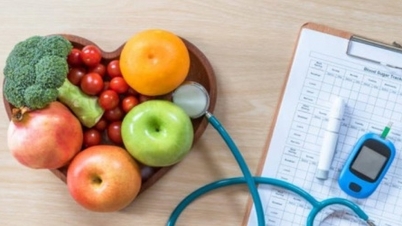





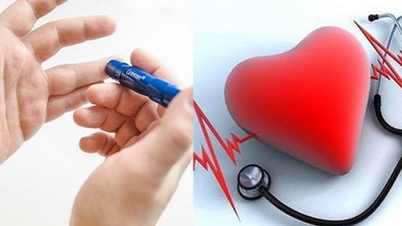
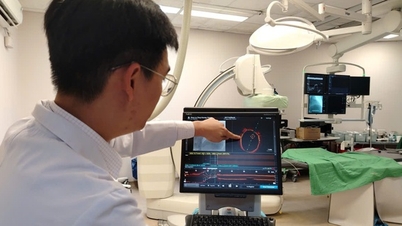


















![[Photo] General Secretary To Lam receives Vice President of Luxshare-ICT Group (China)](https://vphoto.vietnam.vn/thumb/1200x675/vietnam/resource/IMAGE/2025/11/15/1763211137119_a1-bnd-7809-8939-jpg.webp)
















































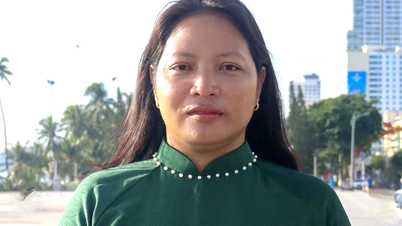







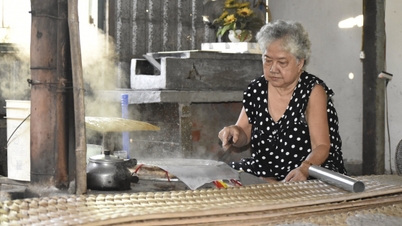












Comment (0)